The privacy reports page allows you to generate privacy-related reports. The currently supported reports are:
- Records of Processing Activities (RoPA)
- Privacy Impact Assessment (PIA)
- Data Protection Impact Assessment
All these reports are required for GDPR compliance (Articles 5, 28, and 32) and can also be used to support other frameworks such as CCPA/CPRA, HIPAA, PCI, GLBA, PIPEDA, APPI, NIST 800 53, ISO/IEC 29100, KSA PDPL, UAE PDPL, and Qatar PDPPL.
The cloud platform provides a guided workflow to streamline the creation of up-to-date privacy reports that reflect recent updates in the selected branch and code repository. Automating data mapping eliminates the need for manual, error-prone processes that rely on incomplete knowledge and can take weeks to complete. With HoundDog.ai’s evidence-based data mapping that automatically feeds into RoPA and PIA creation, privacy teams no longer need to chase app owners for the latest data flows or backfill data flows to hidden AI and third-party integrations that are typically missed by traditional privacy platforms.
To get started, first create an Application, which can consist of one or multiple code repositories. For example, if an application is made up of three repositories - one for the backend, one for the frontend, and another for the authentication service - you can select all three to get a comprehensive view of all data flows within that application.
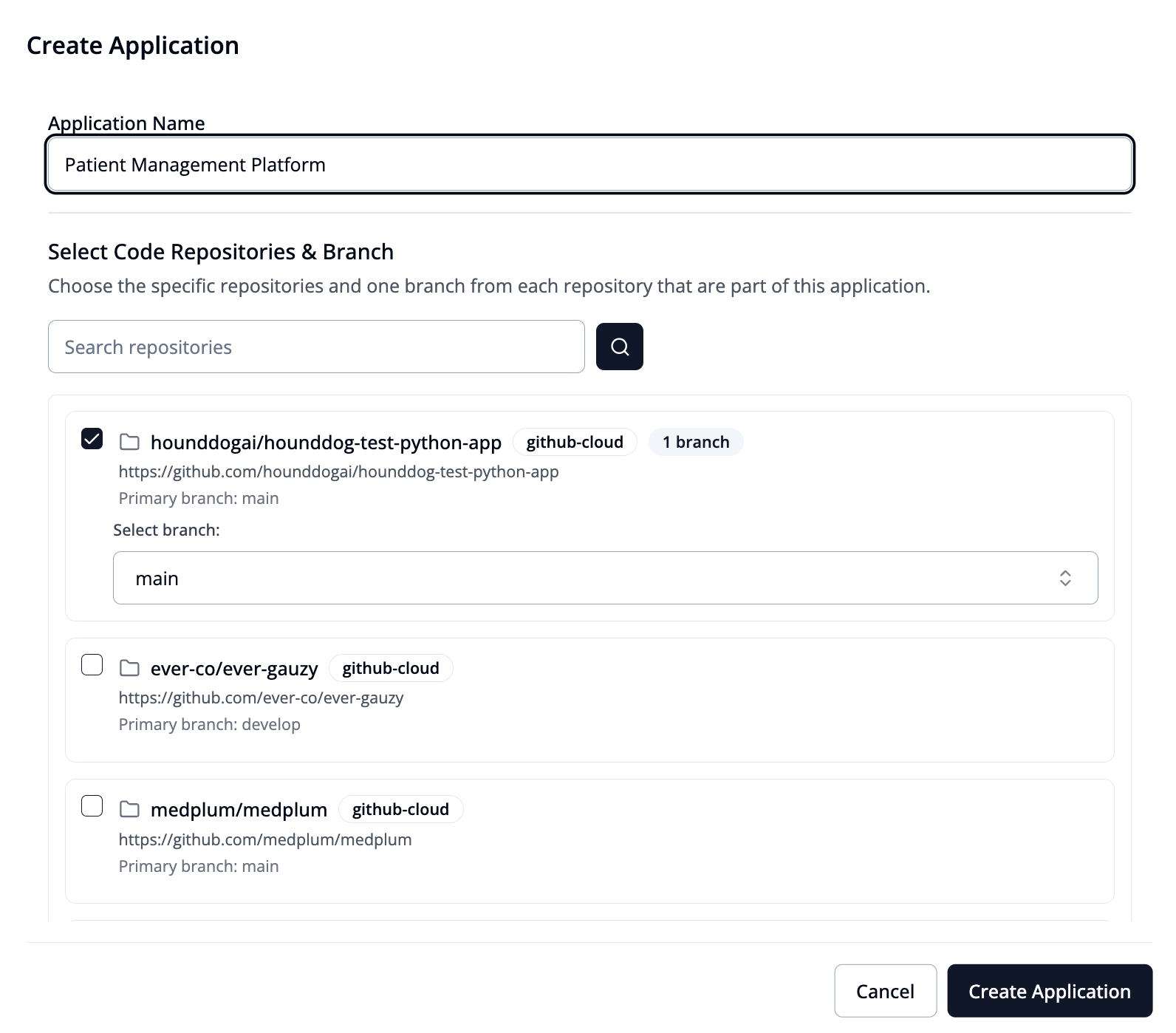
Next, you can create your Records of Processing Activities by clicking the Create New RoPA Report button. The self-guided workflow allows you to fill in information about the legal basis for processing data, your organization’s role in processing, the security controls in place, the data retention policy, and more. The section automatically populated by HoundDog.ai is the Data Flows part, which is arguably the hardest aspect of privacy compliance - especially when development moves quickly and privacy platforms miss hidden data flows to AI and third-party integrations.

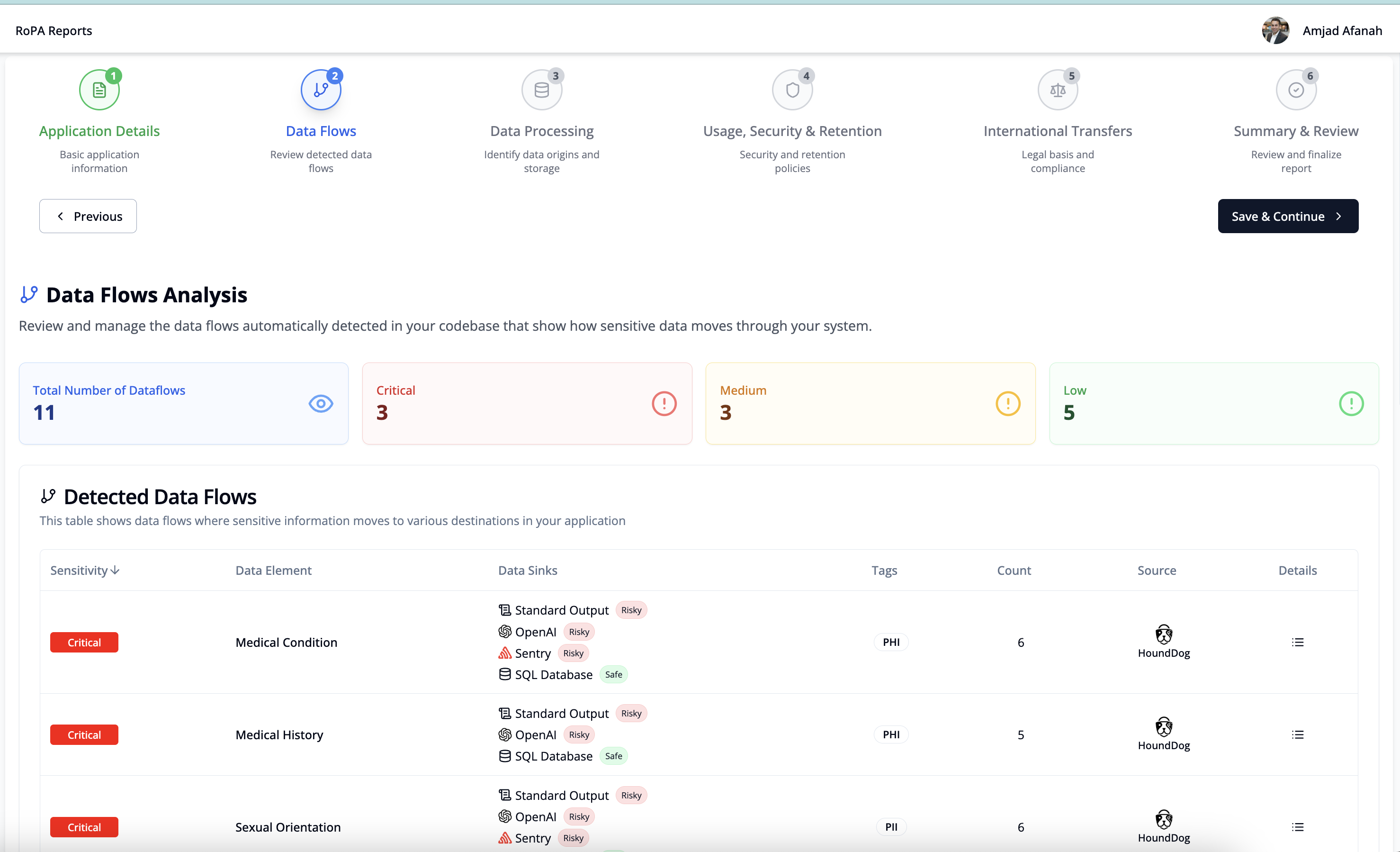
You can also create Privacy Impact Assessments by clicking the Create New PIA Report button. PIA overlaps with RoPA but also includes a privacy risks section. Based on the overall score of detected or declared risks, the report provides a recommendation on whether to proceed with a Data Protection Impact Assessment. Privacy risks detected by the HoundDog.ai scanner are automatically prefilled, giving you visibility into issues such as sensitive exposures in logs, local storage, or third-party SDKs. You can adjust the impact and likelihood scores for detected risks and add your own custom risks.

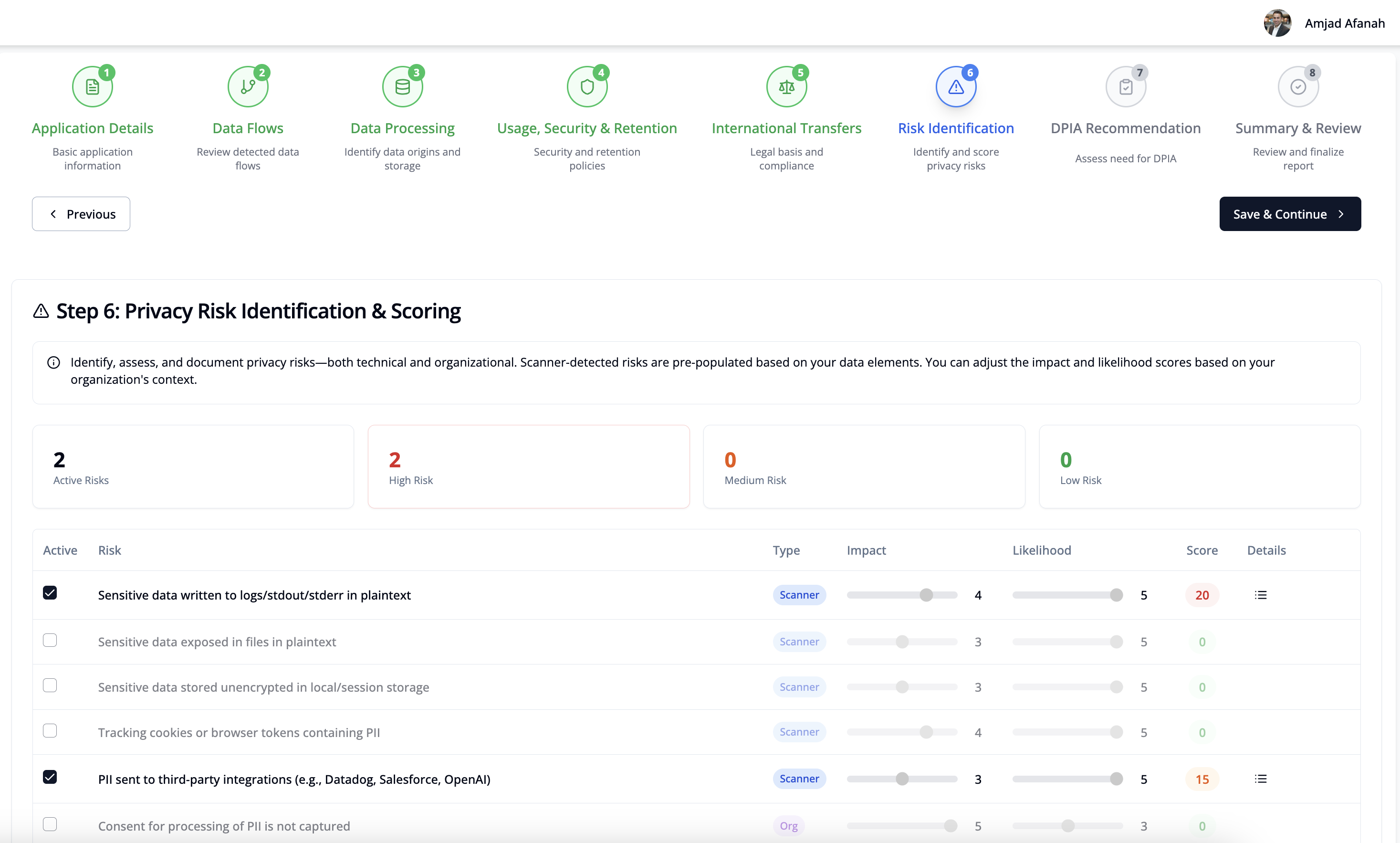
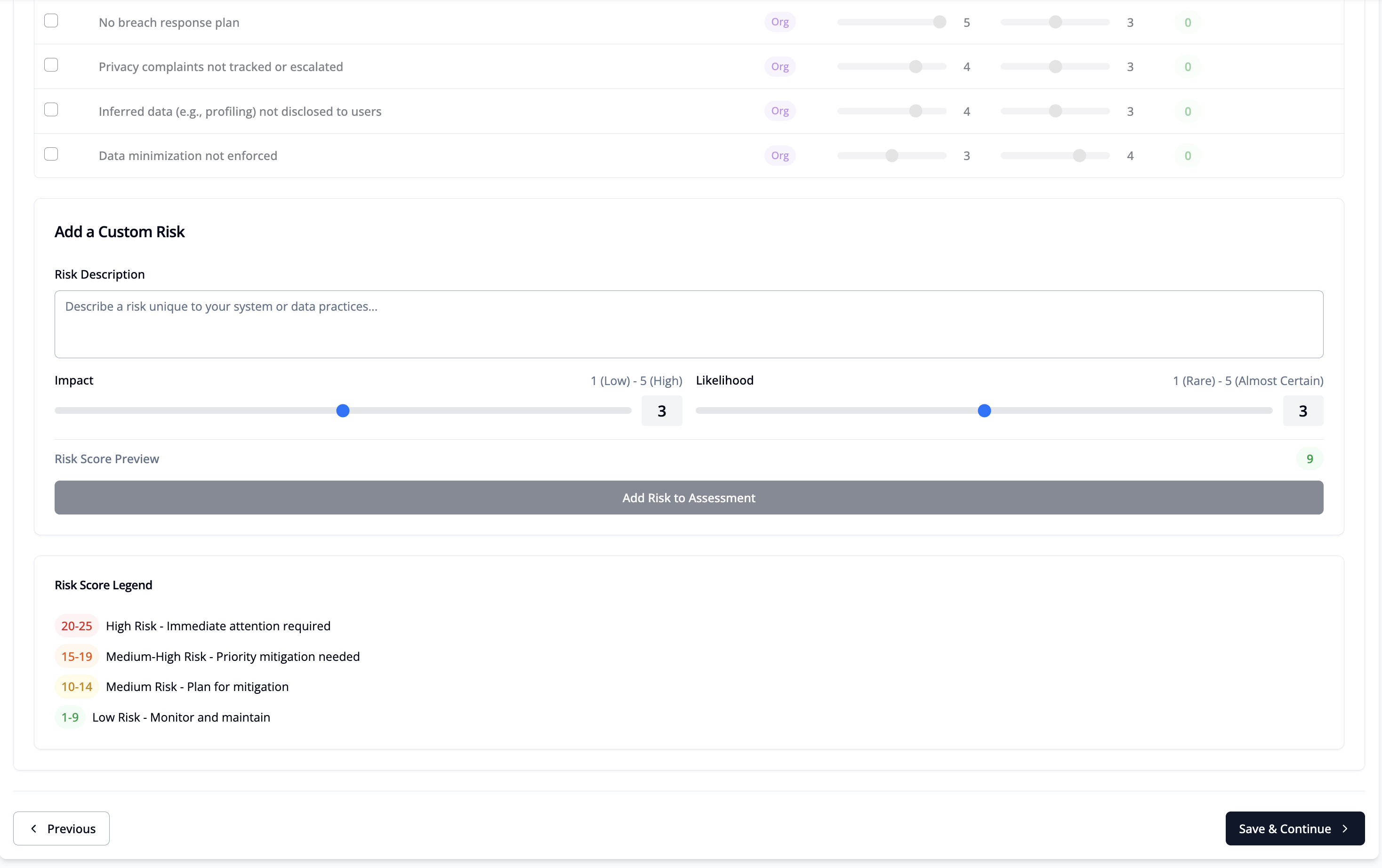
At the end of both RoPA and PIA workflows, you can download the reports in PDF format.
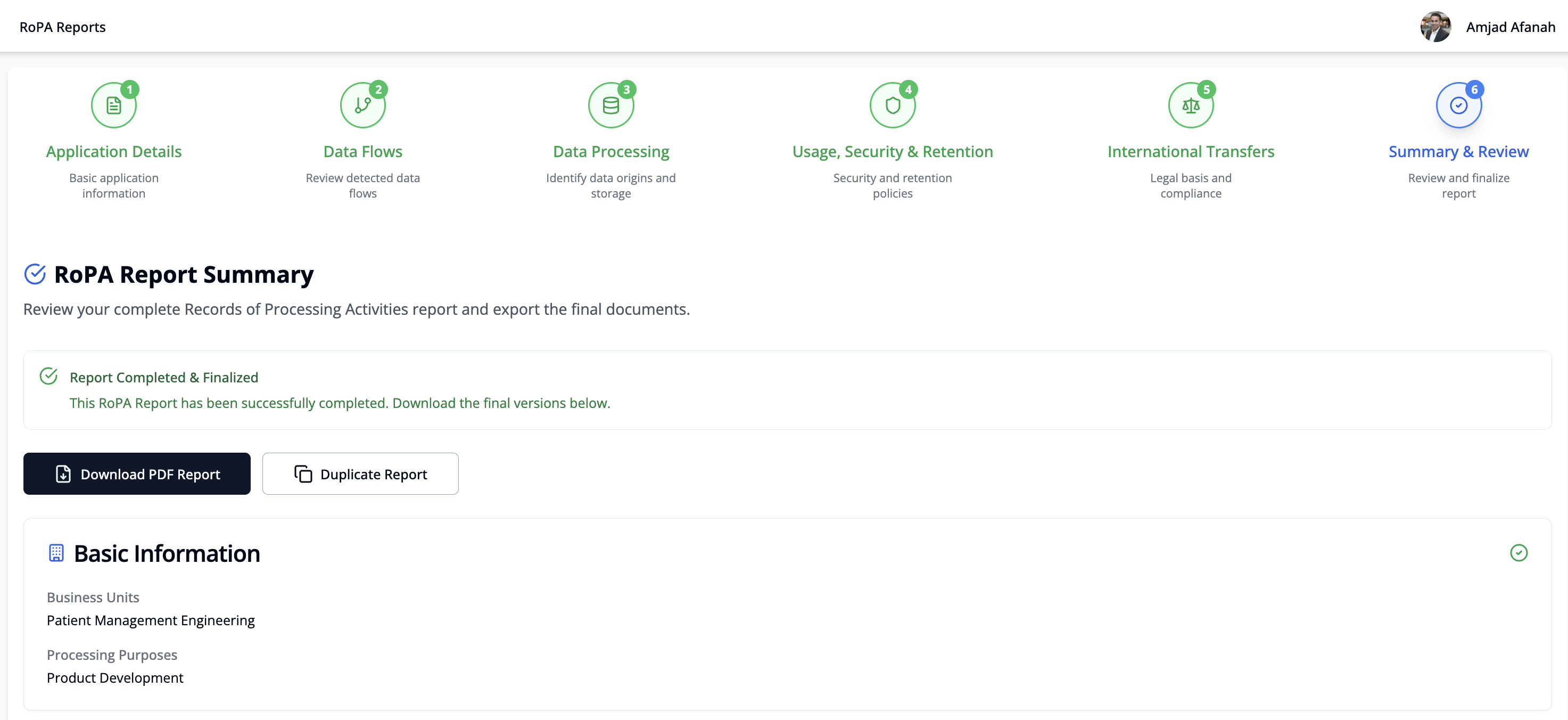
Additional features available for both RoPA and PIA reports include the ability to save a draft and continue editing later, delete reports, and duplicate existing reports.
